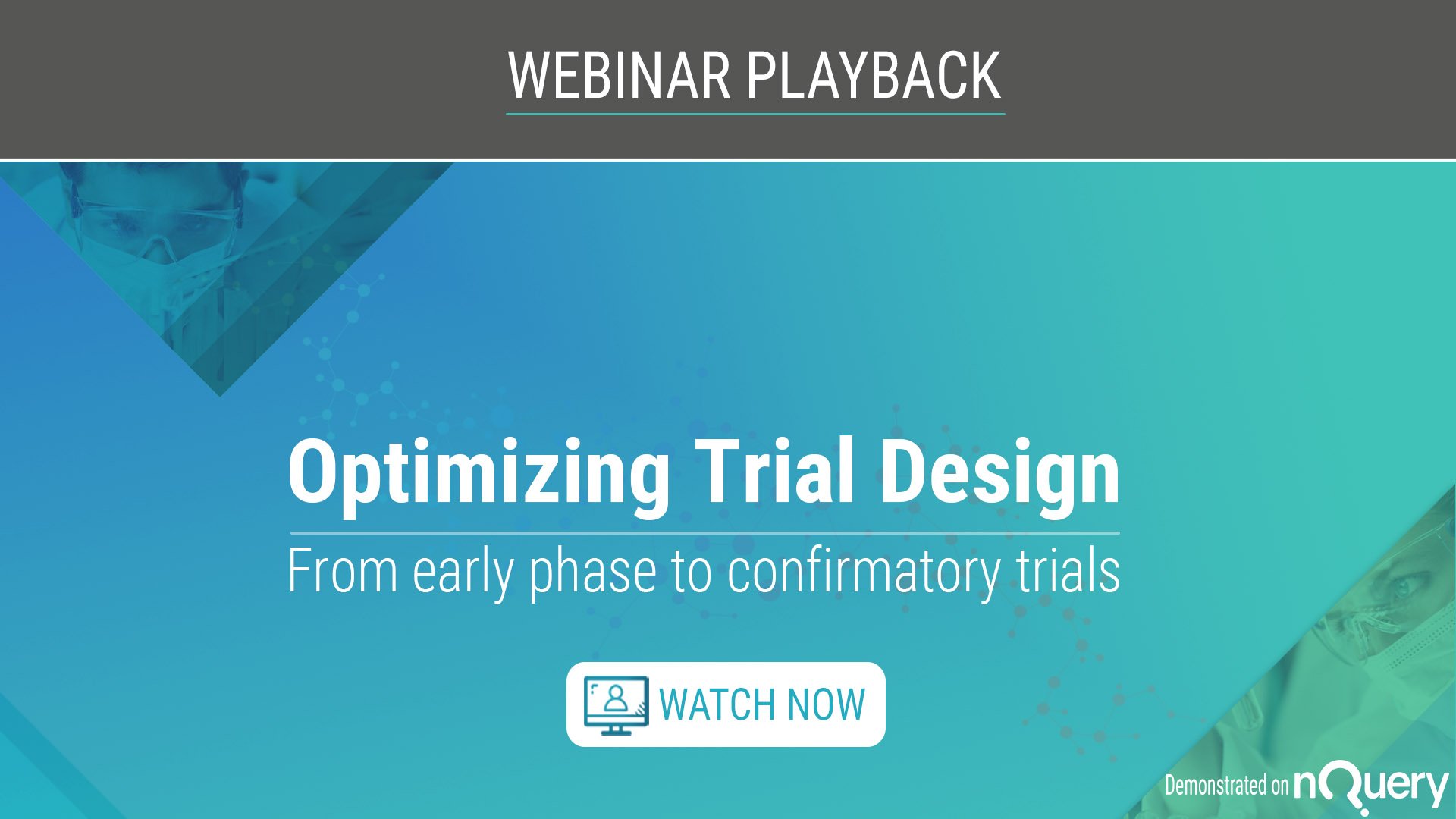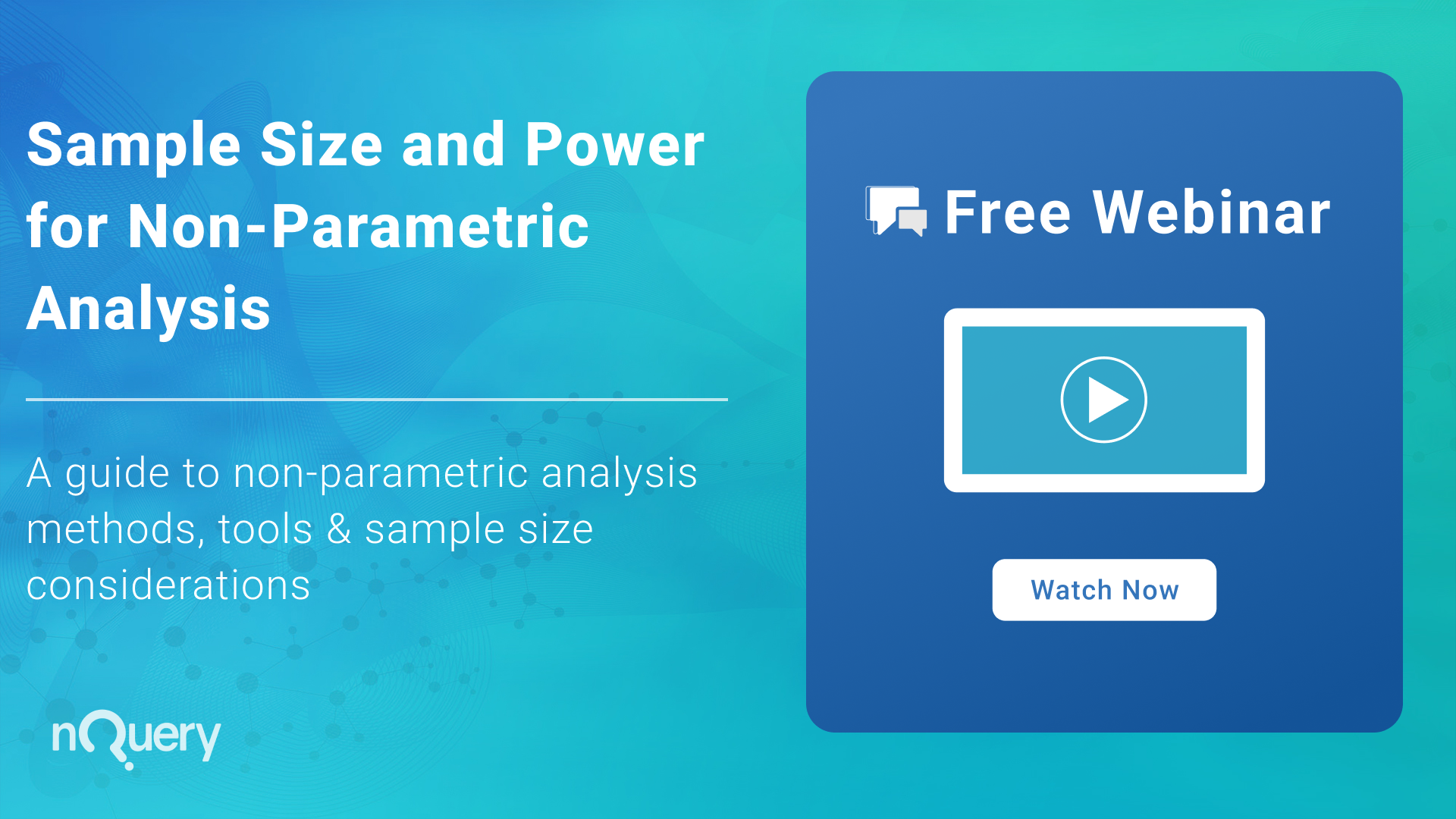About the webinar
In this webinar, we cover how to optimize each phase of your clinical trial design using both standard and innovative methods.

In this free webinar you will learn about:
- Fixed and Group Sequential Negative Binomial Models for Counts
- Simon's Two-Stage Design - Case Study
- Multiple Comparisons Procedure - Modelling (MCP-Mod)
- Continual Reassessment Method (CRM)
Play the video below to watch
the complete recording of this webinar
Duration: 60 minutes
Nothing showing? Click here to accept marketing cookies


Optimizing Phase III Trial Design
Phase 3 confirmatory trials are designed to prove the efficacy and safety for regulatory approval and represent the majority of the cost and resources in drug approval. Sample size determination is a key part of optimizing Phase 3 trials and we will look at the example of sample size for a proposed study with a count endpoint
Fixed and Group Sequential Negative Binomial Models for Counts: Count data is a common endpoint interested in the number of events that occur in a given time. Examples include COPD exacerbation rates and MRI lesions in MS. Count models, such as the Negative Binomial, model these events fully compared to binomial or survival models. Group sequential designs are the most commonly used adaptive design and allows early stopping for efficacy or futility using the flexible error spending function approach.
In this webinar, we will demonstrate how to find the sample size for a count study and extensions to group sequential design.
Optimizing Phase II Trial Design
Phase 2 trials are conducted to show proof-of-concept efficacy and to select the appropriate doses for further evaluation. The high failure rates and limited sample size encourage design flexibility and efficiency, including minimizing the sample size, to achieve the optimal outcome. In this webinar, we will look at the design considerations for two Phase II methods: the commonly used Simon’s Two-Stage Design and the increasingly popular MCP-Mod.
Simon's Two-Stage Design - Case Study: Multi-stage designs are common in proof-of-concept Phase IIa trials so as to allow for flexibility to stop trials early for futility, as Phase II is the most common failure point in drug evaluation. One of the most common multi-stage designs used in Phase IIa clinical trials is Simon's Two-Stage design. This exact design allows flexibility regarding the hypotheses and sample size optimality criteria while allowing stopping for futility.
In this webinar, we will demonstrate sample size determination for Simon’s Optimal and Minimax designs and summarize one and three stage equivalents.
Multiple Comparisons Procedure - Modelling (MCP-Mod): MCP-Mod is an increasingly popular statistical methodology for dose-finding Phase IIb trials. Combining the robustness of multiple comparisons procedures with the flexibility of modelling, MCP-mod combines these methods to provide superior statistical evidence from Phase II dose-finding trials.
In this webinar, we will demonstrate the important design considerations for MCP-Mod and a practical example of calculating the sample size.
Optimizing Phase I Trial Design
Phase 1 trials are first-in-human trials used to establish the safety of proposed treatments in dozens of subjects before further evaluation. However, recent decades have seen innovations for creating more optimal trials and the potential for early efficacy evaluation.
Continual Reassessment Method (CRM): The Continual Reassessment Method is an adaptive Bayesian modelling approach to targeting the maximum tolerated dose (MTD) which provides more accuracy and interpretability versus the results of traditional rule-based approaches such as the 3 + 3 design.
In this webinar, we will demonstrate how to quickly estimate the required sample size for a proposed CRM study. To watch a recording of this webinar and download the slides just click the image below.
Looking for more resources?





















No Comments Yet
Let us know what you think